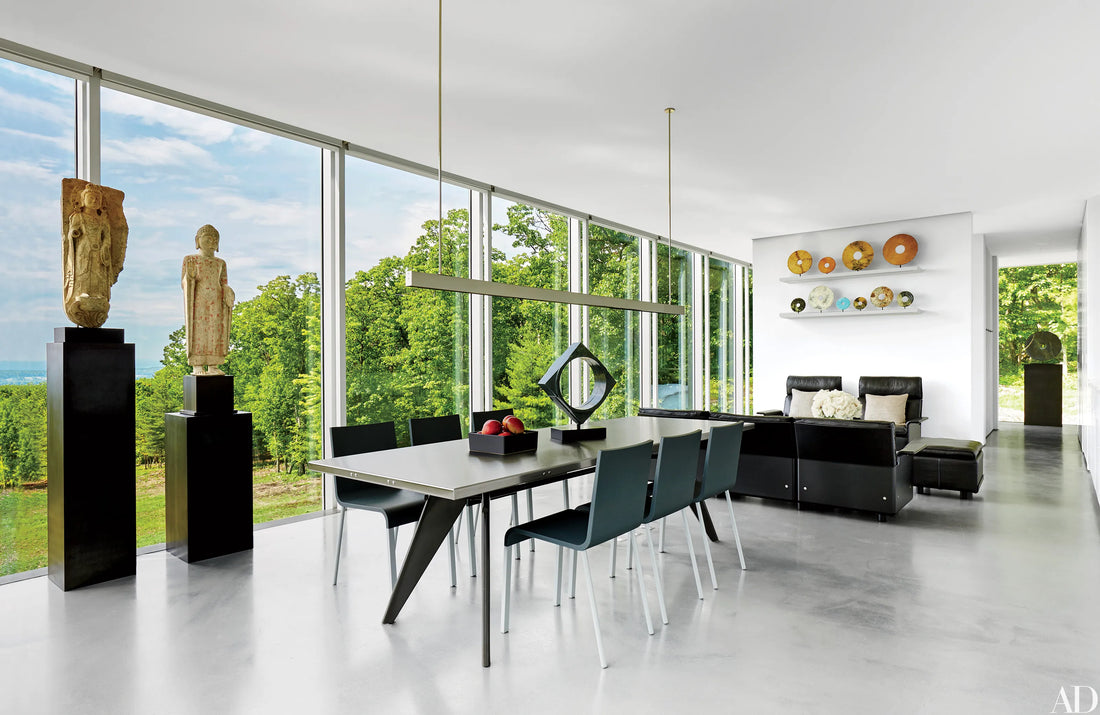
Contemporary Interior Design: Where Innovation Meets Elegance
Contemporary interior design is a dynamic and captivating style that captures the essence of modern living. Rooted in the present, this design philosophy celebrates innovation, clean lines, and a harmonious balance of form and function. As we explore the world of contemporary interior design, we'll delve into its defining elements, design principles, and creative ways to infuse your space with the spirit of the contemporary.
Defining Contemporary Interior Design
Contemporary interior design is a reflection of the current era, encapsulating the prevailing trends and design sensibilities of the moment. It's a style that embraces change and adaptation, making it a versatile canvas for personal expression. With its emphasis on sleekness, practicality, and a seamless blend of technology and aesthetics, contemporary design offers a fresh perspective on modern living.
Key Elements of Contemporary Design
-
Clean Lines: Clean and crisp lines are a hallmark of contemporary design. Furniture and architectural elements feature geometric shapes and uncluttered profiles that exude a sense of order and sophistication.
-
Neutral Palette: A neutral color palette serves as the foundation of contemporary interiors. Whites, grays, and blacks create a timeless backdrop that allows furnishings and decor to shine.
-
Open Spaces: Contemporary design embraces open floor plans that encourage fluidity and connectivity. Spaces are designed to flow seamlessly from one area to another, facilitating interaction and movement.
-
Technology Integration: Technology is seamlessly integrated into contemporary interiors. Smart home systems, sleek gadgets, and innovative appliances reflect the digital age's influence on design.
-
Natural Materials: While contemporary design emphasizes modernity, it also celebrates the beauty of natural materials such as wood, stone, and glass. These elements add warmth and texture to the space.
-
Minimalism: While not as extreme as minimalist design, contemporary interiors often embrace a streamlined and clutter-free aesthetic. Each element serves a purpose and contributes to the overall design.
Design Principles for a Captivating Contemporary Space
-
Balance: Achieve visual equilibrium by distributing visual weight evenly. Balance can be achieved through symmetry, asymmetry, or even radial arrangements, depending on your style.
-
Contrast: Incorporate contrast through the interplay of colors, textures, and materials. Contrasting elements add depth and visual interest to contemporary interiors.
-
Functionality and Comfort: While aesthetics are important, contemporary interiors prioritize functionality and comfort. Furniture should be comfortable and ergonomic, enhancing the living experience.
-
Simplicity: The "less is more" mantra is echoed in contemporary design. Strive for simplicity in furnishings, decor, and the arrangement of elements.
Creative Contemporary Design Ideas
-
Bold Artistic Statements: Incorporate bold and expressive artwork as focal points in your contemporary space. Large canvases, sculptures, or mixed-media pieces can add personality and intrigue.
-
Sculptural Furniture: Opt for sculptural furniture that makes a statement. Unique chairs, coffee tables, and lighting fixtures can become works of art in their own right.
-
Textured Elements: Introduce texture through textiles, rugs, and upholstery. Soft textiles, plush rugs, and textured fabrics add depth and tactile interest to the space.
-
Mixed Materials: Experiment with mixed materials to create an engaging visual contrast. Combine materials like metal, glass, concrete, and wood to add layers of intrigue.
Creating Your Contemporary Haven
-
Strategic Lighting: Utilize lighting as a design element. Incorporate recessed lighting, pendant lights, and floor lamps to create layered illumination and set the mood.
-
Statement Furniture: Choose a few statement furniture pieces that reflect the contemporary aesthetic. Consider a sleek sectional sofa, a sculptural dining table, or a minimalist platform bed.
-
Geometric Patterns: Integrate geometric patterns in textiles, rugs, and decor. Geometric shapes add a dynamic visual element that complements the clean lines of contemporary design.
-
Monochromatic Tones: Embrace monochromatic color schemes for a sophisticated look. Choose a dominant color and incorporate various shades and tones within that color family.
In Conclusion: An Ever-Evolving Aesthetic
Contemporary interior design is a celebration of the present, a canvas where innovation and elegance converge. It's a style that allows you to embrace the spirit of the times while infusing your unique personality and preferences. Whether you're drawn to the sleek simplicity of neutral tones, the intrigue of mixed materials, or the boldness of statement artwork, contemporary design offers a versatile and ever-evolving aesthetic.
As you embark on your contemporary design journey, remember that the key lies in creating a space that is both functional and visually compelling. By thoughtfully selecting each element – from furniture and lighting to materials and decor – you can transform your interior into a contemporary haven that reflects your modern sensibilities. Contemporary interior design is more than just a trend; it's a reflection of the dynamic world we live in, a testament to the innovation of design, and a canvas for your vision of sophisticated living.
